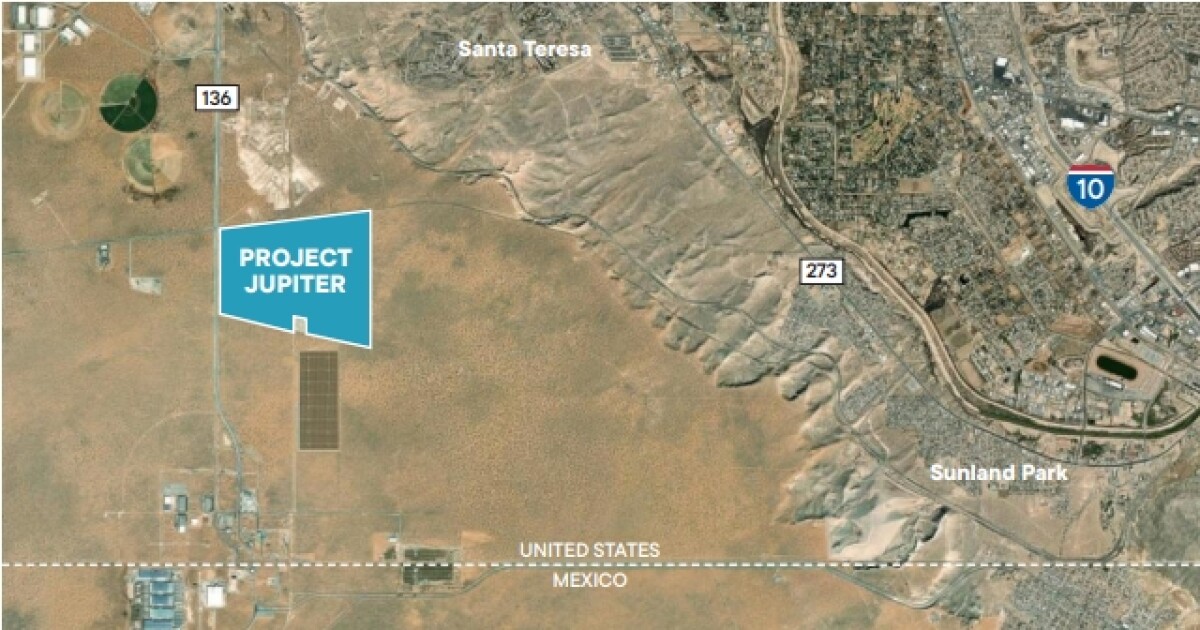Border Industrial Association President Jerry Pacheco weighs in on Project Jupiter. Here is a transcript of the first portion of this conversation:
KC Counts:
I’d like for you to just give some perspective, Jerry, from your position, on Project Jupiter and what you knew about it going in.
Jerry Pacheco:
Well, the project had been kind of floating around. for more than a year. It was more than a year. So we were aware of it because they had been talking to utility companies and what have you. But then back in February, Governor Michelle Lujan Grisham signed an MOU with the company, on behalf of the state, pledging support. So that’s when the ball really started rolling much faster. And at that point, it was a $5 billion project and one data center.
KC Counts:
What do you know about how it grew from there?
Jerry Pacheco:
The AI industry is growing as you see every single day story on AI just advancing. And so the Stargate project was announced. Oracle is involved in that, OpenAI, ChatGPT. And so they made the decision to do a four data center project as part of Stargate right here in Santa Teresa.
KC Counts:
What do you think the impact will be for the positive in the area?
Jerry Pacheco:
On the positive side, they’re estimating 750 jobs, 2,500 construction jobs, up to $165 billion investment. Doña Ana County did abate, 100% abate all of their taxes, property taxes, equipment taxes. But the company signed a contract and did a PILOT, a payment in lieu of taxes of $12 million a year to Doña Ana County. So they write a check of $12 million a year to the county. And that money could be used any way the county wants to use it.
KC Counts:
Do you think that’s enough?
Jerry Pacheco:
I don’t know. I’ve never seen, or I’ve never been involved in a project of this scale. I suppose if you wanted to, you know, to put a pencil to $165 billion worth of assets, land and assets, and, you know, about a 3.3% property tax rate, you know, you actually only tax a third of the value of your property, then you can, you could probably figure out, you know, personally, if you think that’s, if it was worth, you know, if that’s more than 12 million or, you know, 12 million is fair. But that’s a lot of money. That’ll be $360 million to the county over 30 years.
KC Counts:
What can you tell us about Stargate for those who are unfamiliar?
Jerry Pacheco:
Stargate is a project that was announced. It’s AI data center projects, two in Texas, one in New Mexico, one in Georgia, a couple in the Midwest, that are all part of the advancement of the AI that Oracle is involved in. So they are going to spend roughly $500 billion on the five projects. The Santa Teresa project, to my understanding, is the largest. Goldman Sachs is saying that this — our portion of the project is the largest infrastructure project going on in the United States as we speak.
KC Counts:
What concerns do you have about how this project could affect in the near term, or in the long term, other types of development in the region?
Jerry Pacheco:
Well, first of all, the company is going to build their own microgrid, so they’re going to have their own electrical system. They’re not going to be tied into El Paso Electric’s system. A lot of people were worried that if they did that, would our rates go up? Would that suck up a lot of power that would go to other projects? That’s not going to be the case because they’re going to be powering that electrical microgrid with natural gas, which is what’s called a simple cycle system, very low emissions. I was concerned about that, and I talked to my contacts in the New Mexico Gas Company, and they assured me that there’s very few emissions in the type of system that they’re going to be using. Now, the water was a big concern for everybody because we’re in the desert, obviously, and we are growing so much anyway in Santa Teresa that we are using quite a bit of water and wastewater treatment for all the projects that we’re establishing down here and all the housing that’s going on but the company explained that they’re using a closed-loop system each data center. There’s four of them. Each data center is going to have four coolers. Each cooler is going to have an initial charge of 625,000 gallons over two years, that’s 10 million gallons. And once you fill the system, you just simply recirculate the water; there’s not a lot of evaporation or shrinkage of the water. And then the company estimates that they’ll be using just for normal operations about 20,000 gallons a day, not to exceed 60,000 gallons. So when you look at the water usage, which was the main concern to everybody, the 10 million gallons over two years sounds like a lot, but it’s not unreasonable, is what I would say, because I’m coming at it from an industrial standpoint. Industrial operations sometimes use a lot of water. This firm, if they are using 20,000 gallons a day going forward, that’s not unmanageable for the local water system here.
Below is audio if the second portion of KC Counts’ interview with Jerry Pacheco:
Jerry Pacheco is president of the Border Industrial Association

